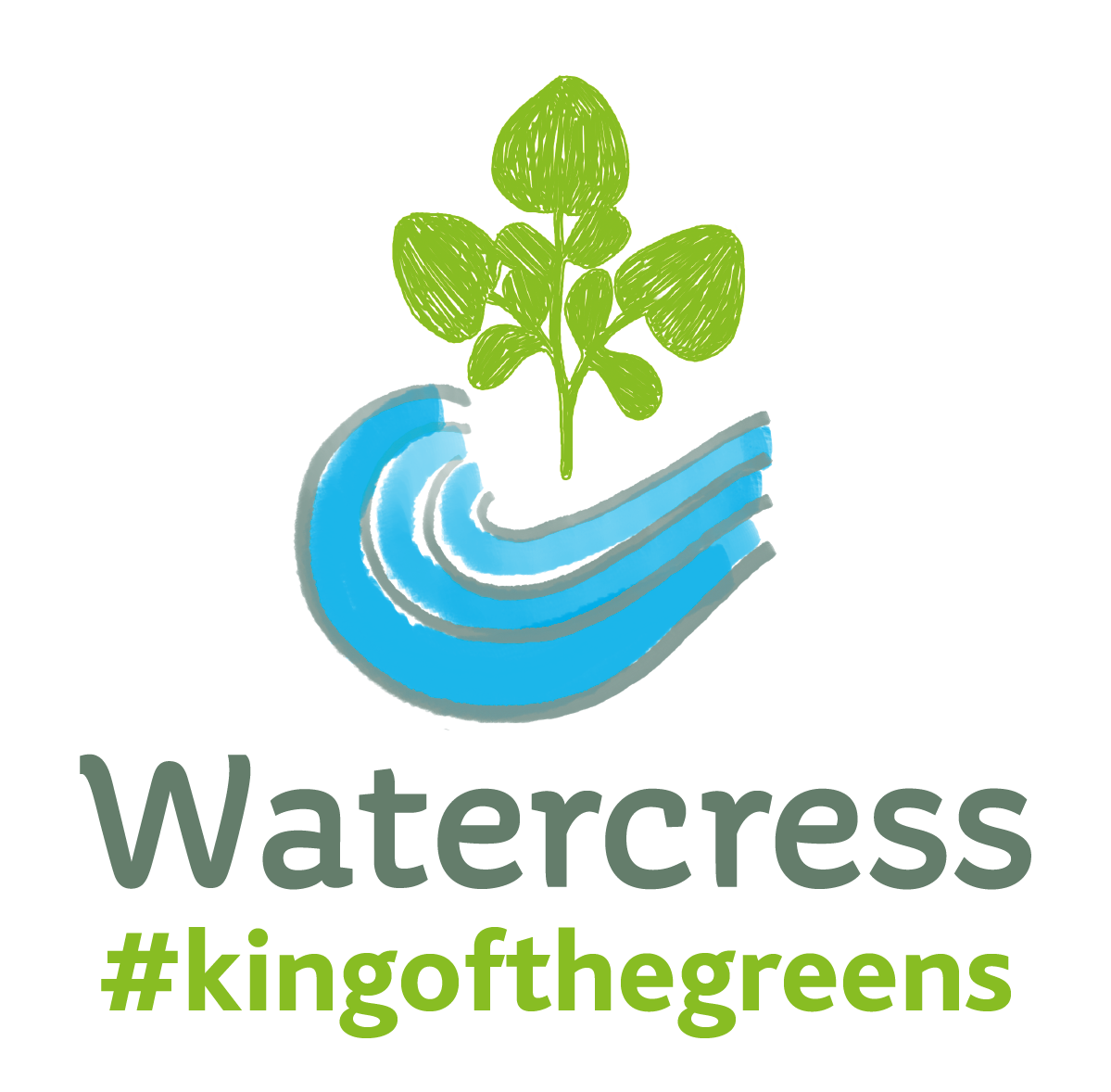The Watercress Line
How many crops can boast a railway line named after them? Not many, if any, so that’s just another thing that makes watercress special. The Mid Hants Railway is generally known as the Watercress Line thanks to its proud history of transporting watercress to the fresh produce markets of the UK during the boom in popularity in Victorian times. Now, it remains one of the most successful heritage railways in the country with an army of volunteers keeping it literally on track, maintaining the engines and the line for posterity and the enjoyment of steam enthusiasts worldwide.
Once a year it remembers its “watercress roots” when the line is used by the thousands flocking to Alresford, Capital of Watercress, for the Alresford Watercress Festival to celebrate the start of the UK watercress season. They travel a few miles from Ropley, following part of the journey the tonnes and tonnes of watercress harvested fresh from the Hampshire watercress beds would have taken to London’s Covent Garden Market.
It’s an impressive history and one in which The Watercress Company is proud to share.
But first
10 facts about The Watercress Line (Mid Hants Railway) today:
10 miles of track between the market towns of Alton and Alresford, just 7 miles from the historic city of Winchester
Four period stations (1930s -1960s): Alresford, Ropley, Medstead & Four Marks and Alton
The Watercress Line boasts the highest station in Southern England, at Medstead & Four Marks. Just outside this station, the line is at its highest point (652 feet (199 m) above sea level) having risen from Alresford (263 feet (80 m) above sea level) and descending to Alton (339 feet (103 m) above sea level). The section of line became known as "the Alps", due to the steep gradients that exist there.
150th anniversary was celebrated in 2015
The Watercress Line today employs 50 staff and 5 engineering apprentices supported by over 450 dedicated volunteers
It’s committed to preserving and maintaining a fleet of steam and diesel locomotives, rolling stock and infrastructure
It attracts 125,000 visitors annually
The Watercress Line has a turnover in excess of £2m
The Watercress Line is Hampshire’s only standard gauge heritage railway
It provides a comprehensive timetable from February to October and throughout December with standard running days and many special family events including ‘Day out with Thomas’ , War on the Line, Wizard Weekend, Steam Galas and Santa Specials. Other popular services include the famous Real Ale Train, The Watercress Belle and the Countryman Dining trains
Originally known as the Alton, Alresford and Winchester Railway, the line opened on 2 October 1865 and was predominantly a goods line, intended to fill the gap between Alton and the main route from London to Southampton, 2.5 miles north of Winchester. It was some 17 miles long through an agricultural area with only Alresford as a town of any size on the route.
The fortunes of the watercress industry and those of the Watercress Line run parallel to each other. Both saw their peak in the Victorian era when the watercress grown in the flowing, mineral filled springs of the chalky South Downs were packed in wicker ‘flats’, and sent to the fresh produce markets of London and other major cities. Once the bunches had made it to London’s Covent Garden market the watercress would be sold by street sellers who during the summer would sell flowers instead. The bunches of watercress were eaten in hand for breakfast straight away or if you were able to afford a loaf, between two slices of bread. The demand for watercress was phenomenal as it had long been recognised for its health benefits and during the winter months a very important source of vitamin C, Iron and other minerals making it a fantastic nutritional supplement.
The speed of the shipments from Farm to Market were testament to the power of the locomotives and watercress was shipped as far afield as Liverpool from this area. The fasted time achieved from Ropley via Waterloo to Liverpool was 7 hrs in total which is incredible achievement and ensured the watercress extremely fresh.
It was during this time that the line took on the nickname it’s held ever since - the Watercress Line.
Back in the early 1900s watercress was a way of life around Alresford, employing hundreds of local people. Even on the farms themselves there was an interest in trains and railways as many had their own narrow gauge tracks to move the watercress around the farm. See this footage from the 1960s.
David Hole remembers how watercress and the Watercress Line were intrinsically linked:
“I have been a farmer all my life. The land I worked went sort of across the Alresford line. The goods train went past at 11 O’clock, that was how we knew the time. The goods train was so different from the normal carriages we could pick it out. I can remember us watching for the train. There weren’t so many watches then, you may have had an old pocket watch between 10 of you. So, you watched for the goods train.
“The farm was originally a sheep farm but it went to arable farming after the shepherd past away. They had a good dairy short horn herd at that stage and a side line of watercress. The watercress must have started way back when the Mills first moved here in 1900. In my time watercress was harvested in any month with an ‘r’ in it – January, February, March, April, September, October, November and December. So, the growing season is May, June, July and August. So, they used to send it all through from September through to April. It was quite a big labour force the watercress, it took quite a few people and the farms had 36 people on them.
“The train took off because it was so quick to get it from Alresford up to London. It used to go to Birmingham, and Manchester and all over the place from here. I used to take the watercress sometimes. I say we started off with a tractor and trailer and then we had a Land Rover. There was a goods van and possibly there may have been a little trolley on the platform for a small amount to go on there. I think when this one stopped (The Watercress Line), we had to take it to Winchester to put it on the train, not for long though, as road transport was coming in by then.”
The watercress industry continued to thrive during both World Wars when the country had to rely on home grown produce. Watercress could be easily grown and didn’t take up any land since it grows in water. Watercress sandwiches at “high tea” became almost a national institution while watercress was a staple ingredient in school dinners; indeed, several experiments conducted by the Ministry of Health in the 1930s concluded that watercress was excellent for promoting children’s growth. In the 1930s women and even children worked together bringing in the harvest as you will see from the footage below.
In the same way, the Watercress Line played an important part during both World Wars due to its location between the army centre of Aldershot and the seaport of Southampton.
The decline of the watercress industry began with the lifting of import restrictions, together with the introduction of exotic varieties of salad leaves, and the closure of many branch railways in the 1960s which made transport of watercress from remote farms and towns more difficult.
Gradually, despite its noble history, watercress gained a reputation as being just a garnish, served up at steak houses and posh hotels and as demand declined, many watercress beds fell into disrepair. Up to the 1940s there were over 1,000 acres of watercress beds across the country, today 150 acres exist concentrated in Hampshire and Dorset.
The Watercress Line was listed for closure in the famous Beeching plan in 1963 and finally closed on 4 February 1973. The line could have been lost forever, but plans for preservation were already in place and the 10 mile route from Alresford to Alton was secured pending purchase. In April 1977 the Mid Hants Railway Ltd opened for business running steam trains over 3 miles between Alresford and Ropley stations, with further extension to Medstead in 1983 and finally through to Alton in 1987 after extensive fundraising to purchase and relay track removed by British Rail.
Today, both the Watercress Line and the Watercress industry are thriving; happily The Watercress Company even plans to build more beds to keep up with the growing demand for watercress. Every May they come together in a celebration of their shared past, and their shared future, at the Alresford Watercress Festival (the next is Sunday 19 May 2019). Festival goers can travel from Ropley to Alresford reliving the heyday of steam as they travel along the line named after the crop that helped to build it.















